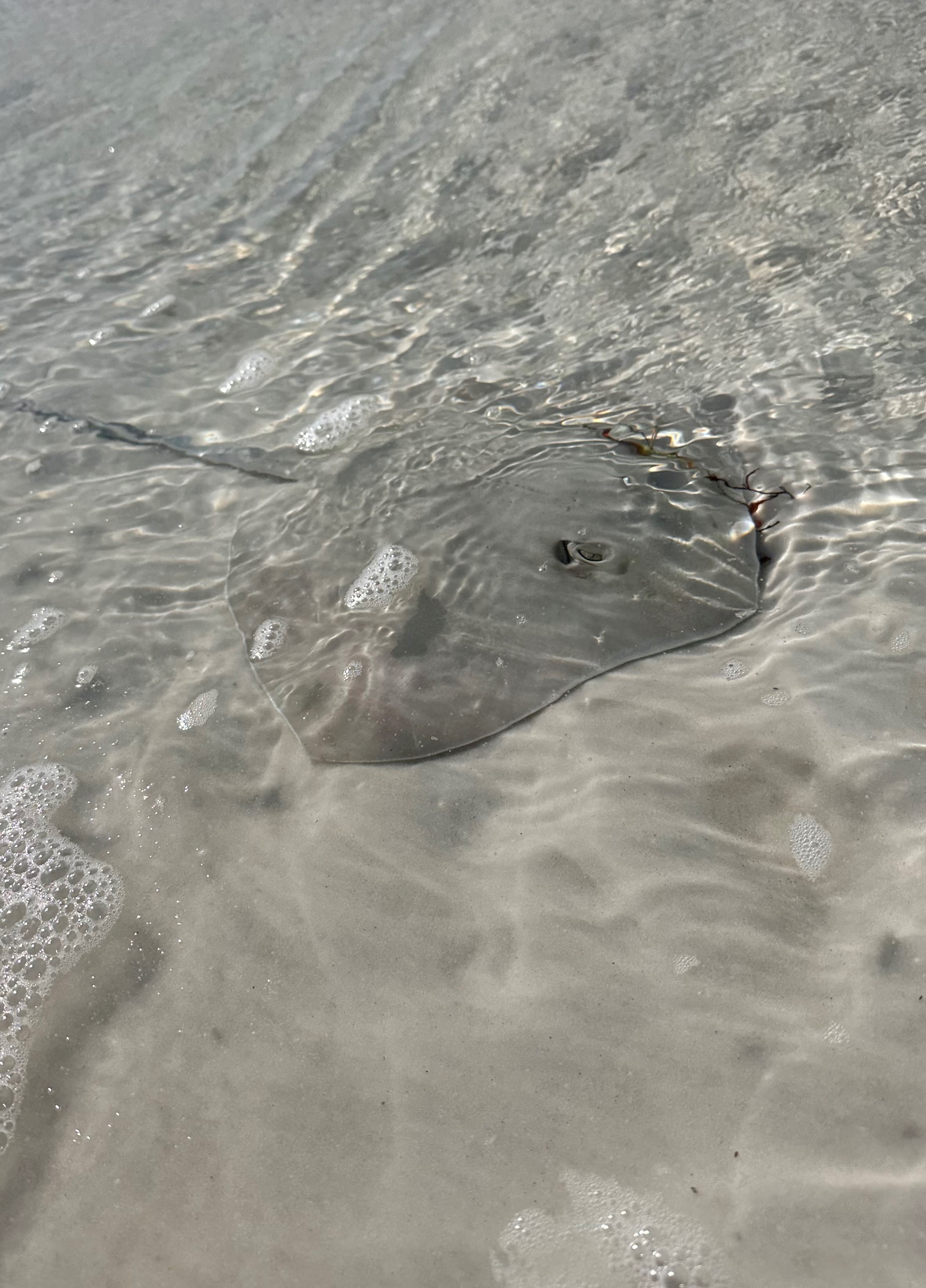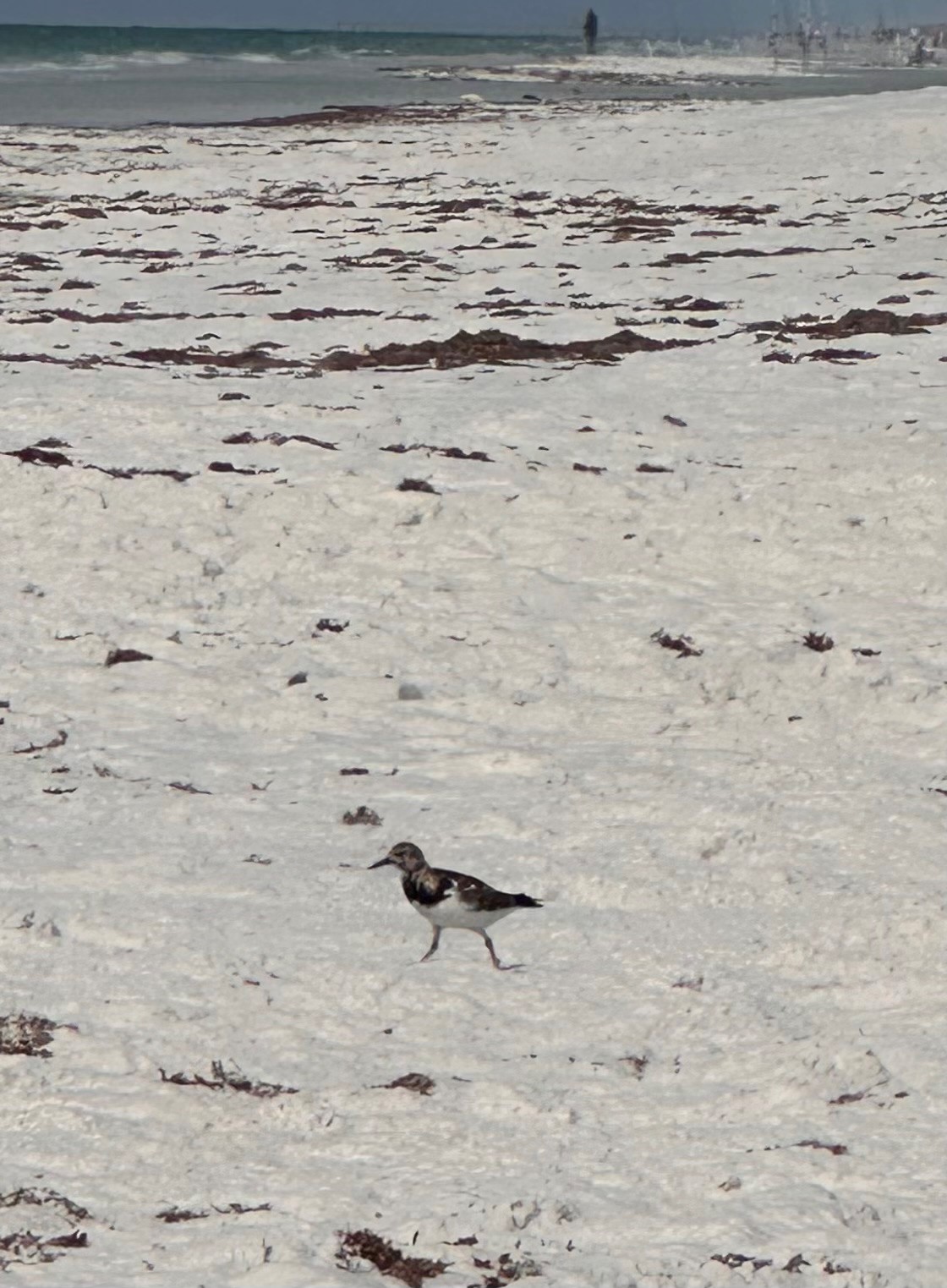I might shock a few people when I say this, but I’d rather be out in the bay somewhere rather than the beach. I just feel like I always bring a gallon of sand back on me even after washing down before getting in the car. However, there is one activity that will always get me out on the beach, and it just so happens to be the right time of the year for it. Florida Pompano (Trachinotus carolinus), aka Pompa-Yes, have started to cruise the white, sandy beaches in search of food as they migrate west to their breeding grounds. While out on a fishing trip this past weekend, the Pompano (and every other fish) eluded me, but I was blessed with an amazing array of wildlife.
When I first arrived at my spot just to the east of Portofino Towers, I was greeted with a pair of Sanderlings (Calidris alba) playing the “water is lava” game while taking breaks between waves to argue with each other and probe the sand with their beaks from marine invertebrates. When I was doing more research on sanderlings, one comment I saw was that they ran like wind-up toys, and that’s the truth! They were pretty brave too, not a single footprint of mine in the wet sand didn’t go un-probed. Sanderlings are “extremely long-distance” migratory birds that breed on the arctic tundra close to the North Pole and winter on most of the sandy beaches in the Gulf of Mexico and around the world. Non-breeding sanderlings will often stay on sandy beaches throughout the summer to save energy. They were great entertainment for the whole fishing trip.
Brown Pelicans (Pelecanus occidentalis) were out in numbers that day. I am not the best photographer, but I was very proud to capture a Pelican mid-flight. These birds are residents of the Florida Panhandle year-round. If you’ve ever been to Pensacola, you might have bumped into one of the many Pelican Statues around the area, and they’re pretty much the unofficial mascot of the area. I am always amazed at how these seemingly big, clumsy birds can effortlessly glide over the waves and water as if they are the Blue Angels doing a low-pass. Pelicans were almost wiped out by pesticide pollution in the 1960’s, but they have made an incredible comeback.
While I was waiting for a Pompano to bite, I had a visit from a small Atlantic Stingray (Dasyatis sabina) that was caught in the tidepool that was running along the beach. He didn’t seem injured or sick, so I quickly grabbed a glove and released him into the gulf. Stingrays are pretty incredible creatures and can get to massive sizes, but they do contain a large, venomous spine on their tail that poses a threat to beach goers. They are not aggressive however, and a simple remedy to make sure you don’t get hit is to do the “Stingray Shuffle” by shuffling your feet while you move in the water to scare up the stingrays.
As I was getting ready to pack up, I noticed a new shorebird flying in to investigate the seaweed that had washed up on shore. I had a hard time identifying this bird, but once I was able to see it in flight with its white stripe down the back, I realized it was a Ruddy Turnstone (Arenaria interpres). Turnstones get their name from their foraging behavior of turning over stones and pebbles to find food. Even though we do not have pebbles, the turnstone was looking through the seaweed for any insects or crustaceans that might be an easy meal. Turnstones are also “extremely long-distance” migratory birds breeding in the arctic tundra with non-breeding populations typically staying on sandy beaches during the summer. The turnstone made sure to stay away from me, but I was able to get a good photo of it as it ran from seaweed clump to clump.
While I didn’t catch anything to bring home for dinner, I did get to enjoy the beautiful day and playful wildlife that I wouldn’t have experienced sitting on a couch. You can turn any bad fishing day into an enjoyable day if you pay attention to the wildlife around you!
- Bring Some Wild Game To Your Holiday Dinner - December 15, 2025
- Aquaculture in the Southern United States: Part 5 – North and South Carolina - December 8, 2025
- Aquaculture in the Southern United States: Part 4-Louisiana & Mississippi - October 29, 2025




